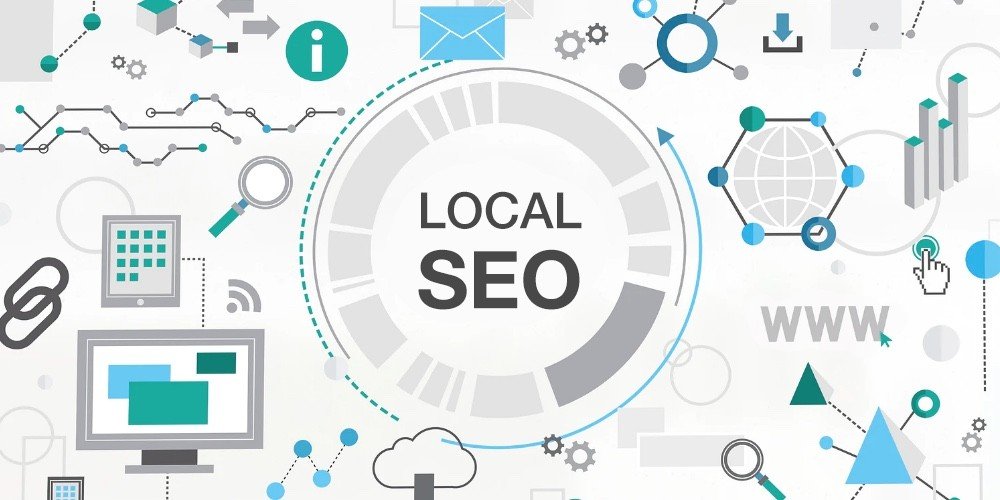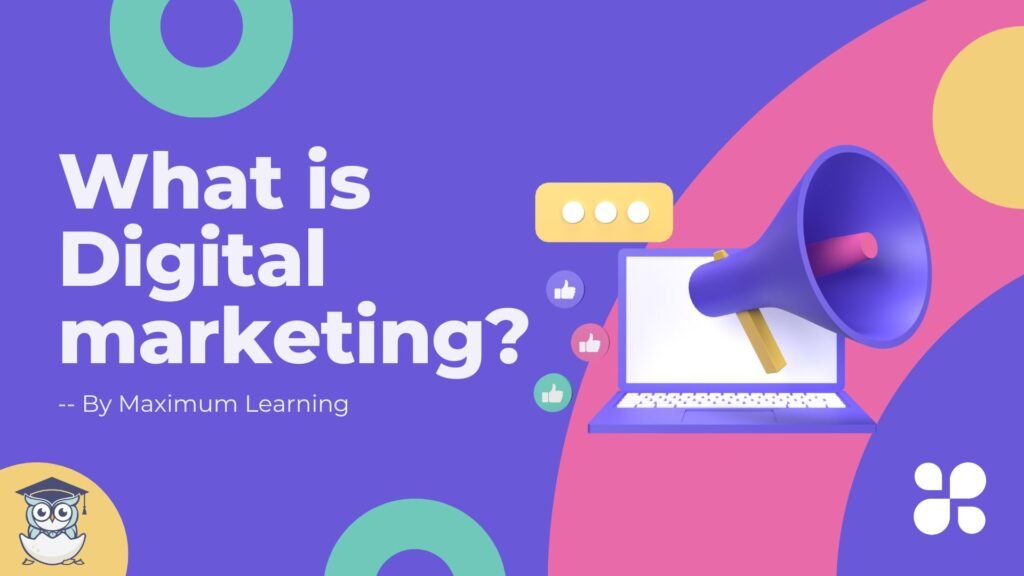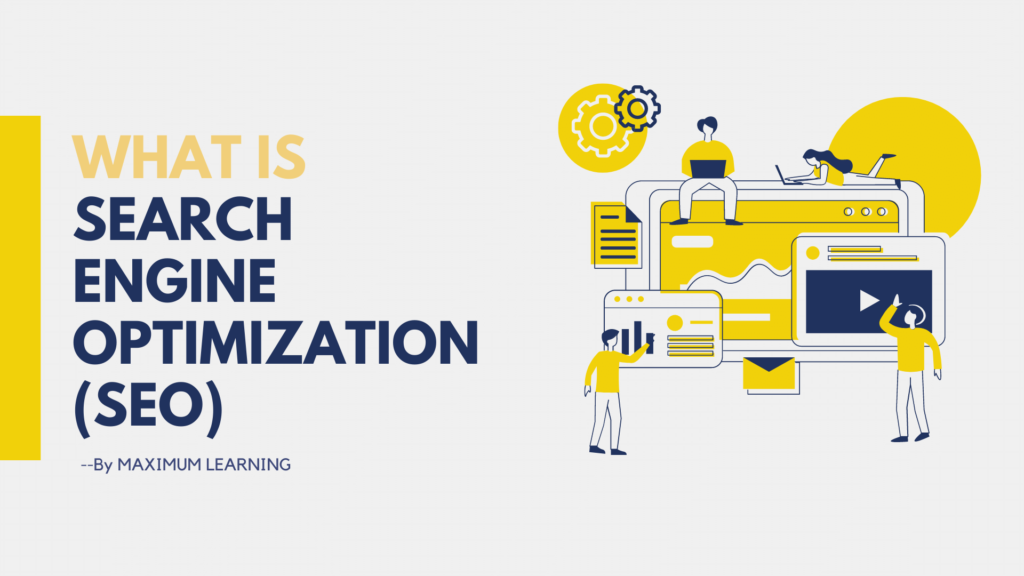Welcome to the digital marketing arena, where the heartbeat of success pulses through the artistry and precision of Pay-Per-Click (PPC) campaigns. Beyond the allure of enticing clicks lies a crucial realm – the conversion journey. Here, the true prowess of PPC campaigns emerges not just in attracting fleeting attention but in seamlessly transforming those clicks into lasting connections and valuable customers.
Picture this guide as your compass in the vast landscape of digital marketing, focusing on a pivotal element that acts as the secret sauce to conversion success – the design and optimization of landing pages. Brace yourself for a journey where the fusion of art and science results in SEO-friendly landing pages. These pages not only turbocharge the effectiveness of your PPC campaigns but also soar your website to new heights of overall performance.
Understanding the Role of Landing Pages in PPC
The Landing Page Crucible:
At the heart of Pay-Per-Click (PPC) campaigns, landing pages serve as the vital bridge between the enticing promises of your ad and the coveted user action that follows.
Imagine your ad as the invitation to a grand event, and the landing page as the venue where the magic happens. An effective landing page is not just a digital placeholder but a meticulously crafted experience. It’s a tailor-made journey designed to resonate with the user’s intent, echoing the promises of your ad and seamlessly guiding them toward the ultimate destination – conversion.
Think of it as a digital concierge service – anticipating the user’s needs, addressing their concerns, and intuitively leading them through the steps that transform curiosity into commitment. The Landing Page Crucible is where user expectations meet strategic design, creating a synergy that goes beyond mere aesthetics. It’s about understanding the psychology of your audience, aligning with their aspirations, and delivering an experience that feels personalized, compelling, and irresistibly aligned with their intent.
Aligning with User Expectations:
Navigating the digital landscape requires marketers to master the delicate art of aligning promises with experiences. Picture this: your landing page is the culmination of a digital handshake initiated by your PPC ad. It’s not just a destination; it’s a commitment fulfilled in pixels, designed to resonate with the expectations set by your ad copy.
In the realm of blogging, where every word is a brushstroke painting a vivid picture, the landing page serves as the canvas for your narrative. Consistency in messaging becomes your palette, each stroke contributing to the masterpiece of trust-building. Readers, akin to literary connoisseurs, seek a seamless transition from the promise made in the ad to the immersive experience of the landing page.
A well-crafted landing page is a testament to reliability, a pledge honored through every word and design choice. It becomes the bridge that carries your audience from curiosity to conviction. Think of it as a storyteller’s commitment – where the tale spun in your ad finds its continuation in the immersive prose of your landing page.
In the blogging arena, trust is your currency, and consistency is your lifeline. Readers are more likely to journey further, engage meaningfully, and ultimately take the desired action when the narrative flows seamlessly from the ad to the landing page. It’s about creating a literary synergy that not only captivates but also converts, turning casual readers into committed enthusiasts.
Crafting Compelling and Relevant Content
The Power of Persuasive Copy:
Crafting compelling and relevant content, especially in the realm of persuasive copy, is a nuanced art that can significantly impact how a message resonates with an audience. One key aspect is the development of concise and persuasive copy that effectively communicates the unique value proposition of a product, service, or idea. This involves distilling the essence of what sets it apart and presenting it in a clear and engaging manner.
To enhance the persuasiveness of the copy, it’s crucial to shift the focus from merely listing features to highlighting the tangible benefits that the audience will experience. By understanding and addressing the user’s needs and desires, the content becomes more relatable and compelling. This means delving into the ways the offering can positively impact the user’s life, solve their problems, or fulfill their aspirations.
Furthermore, a successful persuasive copy taps into the emotional aspects of the audience, making a genuine connection. By identifying and addressing the emotions associated with the user’s needs, the content becomes not just informative but also evocative. This emotional resonance creates a lasting impression and enhances the likelihood of the audience taking the desired action.
Relevance to Ad Copy:
In the realm of advertising, the effectiveness of an ad copy goes beyond just its individual merits; it extends to the seamless transition from the ad to the landing page. To maximize impact, it’s crucial to maintain a cohesive user experience by ensuring continuity in language, tone, and visual elements between the ad and the subsequent landing page.
Firstly, a smooth transition involves maintaining consistency in the language used in the ad copy and on the landing page. If the ad promises a particular offer, solution, or message, the landing page should deliver on those expectations. This not only prevents confusion but also instills a sense of trust in the audience, as they feel that the landing page fulfills the promises made in the ad.
Secondly, the tone of the ad should carry over to the landing page to create a unified brand voice. Whether the ad adopts a formal, casual, or humorous tone, this should be reflected in the landing page content. Consistency in tone helps in reinforcing the brand identity and makes the user experience more coherent and memorable.
Visual elements also play a pivotal role in maintaining continuity. The design elements, color schemes, and imagery used in the ad should be echoed on the landing page. This visual consistency helps users instantly recognize that they have landed in the right place, reinforcing their confidence in the brand and reducing any potential disconnect.
By ensuring a seamless transition from ad to landing page, businesses can enhance the overall effectiveness of their advertising campaigns.
This approach not only improves user satisfaction but also increases the likelihood of conversions, as users find a consistent and cohesive experience from the initial point of contact through to the conversion journey. In essence, relevance in ad copy extends beyond the text to encompass the holistic user experience, creating a unified and impactful brand message.
Optimizing for Keywords and SEO
Keyword Alignment:
keyword alignment is a crucial strategy for enhancing the performance of both pay-per-click (PPC) campaigns and landing pages. To optimize for keywords and improve overall relevance, it is essential to seamlessly integrate relevant keywords from your PPC campaign into the content of your landing page.
Firstly, incorporating keywords from your PPC campaign into the landing page content ensures a cohesive and consistent message. When users click on an ad and are directed to a landing page that mirrors the language used in the ad, they are more likely to find what they are seeking. This not only enhances the user experience but also boosts the credibility and legitimacy of the content.
Moreover, aligning keywords between the PPC campaign and the landing page contributes to a higher Quality Score. Search engines evaluate the relevance and coherence between the keywords, ad copy, and landing page content. When these elements align seamlessly, it signals to search engines that the landing page is directly related to the user’s query, resulting in a higher Quality Score. A higher Quality Score, in turn, can lead to improved ad placements and potentially lower costs per click in PPC campaigns.
In the context of SEO, integrating relevant keywords into landing page content enhances the page’s visibility in organic search results. Search engines rank pages based on relevance to user queries, and having well-aligned keywords contributes to a higher ranking. This is particularly important for attracting organic traffic and establishing a strong online presence.
SEO-Friendly Elements:
Creating an SEO-friendly website involves implementing various elements and best practices to enhance visibility in search engine results. Two critical aspects of this process include incorporating on-page SEO elements and optimizing the technical aspects of the website.
On-Page SEO Elements:
- Meta Tags: Utilize meta tags, including meta titles and meta descriptions, to provide concise and relevant information about the content of each page. These tags not only influence search engine rankings but also impact the click-through rate from search engine results pages (SERPs).
- Headers (H1, H2, etc.): Structure content with headers to improve readability and signal the hierarchy of information to search engines. The H1 tag should typically contain the main keyword, while the H2 and subsequent tags organize subtopics.
- Alt Attributes: Optimize images with descriptive alt attributes. This not only makes the content accessible to users with disabilities but also provides search engines with additional context about the content of the images.
Technical SEO Optimization:
Mobile Responsiveness: Ensure the website is optimized for mobile devices. With the increasing use of smartphones, Google prioritizes mobile-friendly websites in its rankings. A responsive design ensures a consistent and user-friendly experience across different devices.
Page Speed: Optimize page loading times for a better user experience and improved search engine rankings. Compress images, leverage browser caching, and minimize unnecessary scripts to enhance page speed.
Clean URL Structure: Create clean and descriptive URLs that include relevant keywords. A clear URL structure not only aids search engines in understanding the content hierarchy but also makes it easier for users to comprehend the topic of the page.
By incorporating these on-page SEO elements and optimizing technical aspects, a website becomes more search engine-friendly. This, in turn, increases the likelihood of ranking higher in search results, driving organic traffic, and providing a better overall experience for users. Regular monitoring, updates, and adherence to evolving SEO best practices are essential for maintaining and improving a website’s search visibility over time.
Crafting a Visually Appealing Design
Visual Hierarchy:
Crafting a visually appealing design involves more than just aesthetic considerations; it requires strategic thinking about how users perceive and interact with the content. Visual hierarchy is a fundamental principle in design that focuses on organizing elements on a page in a way that guides users’ attention and helps them understand the importance and relationships between different elements.
To establish a clear visual hierarchy, it’s essential to prioritize key elements and the conversion goal. This can be achieved through various design elements:
Placement and Size: Position important elements prominently on the page and use varying sizes to emphasize their significance. Larger and centrally located elements tend to grab more attention, guiding users toward critical information.
Contrast: Utilize color, font weight, and other visual contrasts to highlight key elements. For example, make the call-to-action buttons or essential information stand out by using contrasting colors against the background.
Whitespace: Proper use of whitespace helps create breathing space around elements, making the content more digestible. It also aids in separating and highlighting key elements, preventing visual clutter.
Typography: Choose font styles, sizes, and formatting to convey the hierarchy of information. Headings, subheadings, and body text should be distinct, making it easy for users to scan and comprehend the content.
Visual Cues: Employ arrows, images, or other visual cues to direct users’ eyes toward important elements. This can be particularly effective in guiding users through a step-by-step process or drawing attention to a specific conversion point.
Engaging Imagery:
Crafting a visually appealing design involves integrating high-quality, relevant images to complement the message, enhance user engagement, and reinforce brand identity. By choosing visuals aligned with content, fostering emotional connections, and maintaining brand consistency, engaging imagery becomes a powerful storytelling tool that captures and retains user attention in today’s fast-paced online landscape. Ultimately, the strategic use of visuals enhances both aesthetic appeal and communicative efficacy, creating a memorable and impactful user experience.
Implementing a User-Friendly Experience
Streamlined Navigation:
Implementing a user-friendly experience hinges on the principles of streamlined navigation, which involves creating a simple and intuitive journey for users while minimizing distractions to guide them toward the conversion point. Simplifying navigation means organizing menu structures and page layouts in a way that is easy to understand and navigate. This includes clear and concise labeling of menu items and providing straightforward pathways for users to access the information they seek.
Additionally, minimizing distractions involves decluttering the interface, avoiding unnecessary elements that might divert attention, and strategically directing focus toward the conversion goal. Whether it’s a call-to-action button, a form, or a specific piece of content, a streamlined navigation design ensures that users can effortlessly navigate through the website or application, reducing friction and enhancing the overall user experience. By maintaining simplicity and guiding users with clarity, businesses can increase the likelihood of conversions and create a positive and efficient interaction with their audience.
Clear Call-to-Action (CTA):
In crafting a user-friendly experience, a clear call-to-action (CTA) is pivotal for guiding users toward the desired actions on a website or platform. To optimize this, it’s essential to place a prominent and compelling CTA that stands out visually, ensuring it captures immediate attention. The design, color, and placement of the CTA should distinguish it from other elements on the page, making it easily identifiable. Equally important is the clarity of the CTA’s message, explicitly conveying the next step users are expected to take, whether it’s making a purchase, subscribing, or filling out a form. Using concise and action-oriented language enhances the effectiveness of the CTA, reducing any ambiguity and motivating users to engage. Ultimately, a well-crafted and prominently displayed CTA serves as a crucial guidepost, steering users toward conversions and contributing to an overall seamless and user-friendly experience.
Building Trust with Social Proof
Testimonials and Reviews:
Building trust with social proof is a cornerstone of effective online engagement, and testimonials and reviews play a pivotal role in this strategy. Authentic testimonials and positive reviews from satisfied customers provide tangible evidence of the value and quality of your offering. By incorporating these testimonials into your website or promotional materials, you enhance credibility and reassure potential users or customers. Social proof not only showcases real experiences but also fosters a sense of trust and reliability. It allows users to gauge the satisfaction of others who have already engaged with your products or services, instilling confidence and encouraging them to take positive action. Leveraging testimonials and reviews is a powerful way to establish trust, alleviate concerns, and build a positive perception of your brand or business.
Trust Badges and Certifications:
Boost trust and address concerns by prominently displaying relevant certifications, awards, or security badges on your website. These trust badges serve as tangible proof of your credibility and commitment to quality, instilling confidence in users. Whether it’s industry certifications, excellence awards, or security indicators, these visual cues effectively communicate your trustworthiness and reduce potential objections. By showcasing these elements, you create a transparent and reliable image, encouraging users to engage with your products or services with greater assurance.
A/B Testing and Continuous Improvement
Iterative Optimization:
Iterative optimization through A/B testing is a dynamic strategy aimed at refining and enhancing the performance of different elements on a website or platform. By implementing A/B testing, variations of specific elements are systematically compared to evaluate their effectiveness in achieving predefined goals. This could include testing different headlines, images, calls-to-action, or layouts to understand which resonates better with the audience. Once the results are analyzed, the winning variation is implemented, fostering continuous improvement based on data-driven insights. Additionally, user feedback is a valuable component in this iterative process, providing qualitative insights into the user experience and potential areas for enhancement. The combination of A/B testing and continuous optimization ensures that a digital presence remains adaptive and responsive to evolving user preferences, ultimately leading to a more refined, user-centric, and effective online experience.
Analytics and Insights:
Utilize analytics tools to track user behavior on landing pages, extracting valuable insights for refining your approach and improving overall campaign performance. This iterative process ensures a targeted, user-friendly, and impactful digital presence.
Mobile Optimization
Responsive Design:
Optimize landing pages for mobile by implementing responsive design, ensuring a seamless and consistent user experience across various devices, including smartphones and tablets. This approach is crucial for meeting the needs of users on the go and enhancing overall online presence.
Fast Load Times:
Ensure fast load times on mobile by optimizing images and minimizing code for swift page loading. Given the on-the-go nature of mobile users, prioritizing a rapid and responsive experience is crucial for reducing bounce rates and enhancing overall engagement, contributing to the success of your digital presence.
Conclusion
Maximizing PPC success involves recognizing the pivotal role of SEO-friendly landing pages as the secret ingredient. Crafting landing pages that align with search intent and offer a seamless, compelling user experience is key. This guide serves as your compass in navigating the synergy between PPC and landing pages. Following these strategies not only enhances your PPC campaigns but also establishes a foundation for continuous improvement and triumph in the realm of digital marketing. The emphasis is on creating pages that not only attract clicks but also deliver a satisfying user journey, ensuring a comprehensive and effective approach to online advertising.




